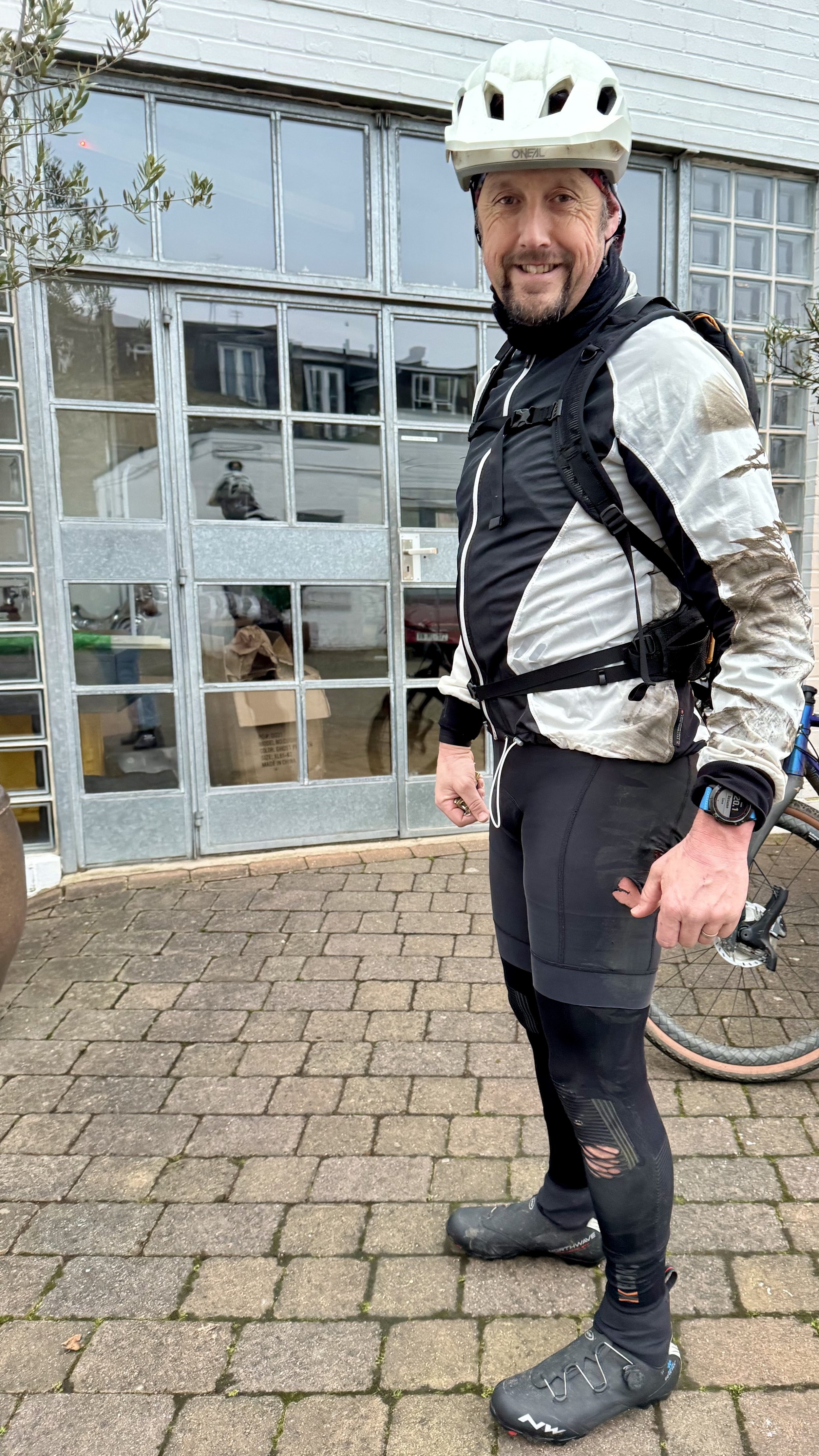As a cyclist for over three decades, my passion for riding has never wavered. So, when I took on the role of Head of Sales at Quin Design, you can imagine my excitement at becoming a fully-fledged cycle commuter.
My daily commute — twice a day, five days a week — totals 150 miles weekly. Add to that my weekend rides across gravel, MTB XC, enduro, and e-bikes, and I rack up some serious mileage each year.
Integrating Quin’s safety technology into my helmets has transformed both my daily commutes and weekend adventures. More than just a personal safety upgrade, the Quin device provides peace of mind for my wife, kids, and colleagues—ensuring that if something happens, alerts will be sent to my nearest and dearest.
That reassurance became all too real over the past two weeks, during which I experienced three significant crashes.
The first two crashes happened on the same day during the Gorrick Brass Monkey three-hour cross-country mountain bike endurance race.
On my first lap, I misjudged a river crossing and caught the handlebars of my Niner RKT/RDO 9 - this sent me flying over the bars and into the water, where I hit my head on the riverbank. My O’Neal Trailfinder helmet absorbed a 27g impact directly to the left side. Soaked and wishing I’d worn a wetsuit, I pressed on. The Quin device recorded the impact using its offline feature, as I wasn’t connected to a mobile network.
The second crash happened in almost the same spot on lap two. Barreling through at over 20 mph, I failed to notice a low tree limb that the race organizer had marked with tape. My O’Neal helmet struck the tree at the top, recording another offline impact of 99g.

By the end of lap three, my brake pads had worn out in the terrible weather conditions. With no ability to stop safely, I had to call it a day two hours into the race. That’s racing!
I went home that day, carried on as usual, and started the workweek. I noticed a dull headache and disrupted sleep but thought little of it and attributed it to some parental exhaustion. It was only after my third crash on the Friday (We’ll get to that in a minute) and my colleagues giving me a full report on my g-force impact with some questions of my wellbeing did I start to consider the symptoms may be related to my impacts. With this new perspective, I acknowledged the more likely scenario and possibility of a minor concussion.
I immediately took the steps to recover, taking a full week off from cycling, prioritizing rest, improved my sleep, focused on proper nutrition and attended a few physio sessions in the week where they were able to pinpoint the source of muscle compressions and tightness in my neck from my data. This experience reinforced just how important it is to recognize the signs of potential head injury - ignoring them can have serious consequences. Awareness is key.
Back to crash number 3, on Friday morning, while descending the backside of Crystal Palace, I hit an oil patch mid-corner at just over 30 mph. Both wheels lost traction, and I went down hard, sliding across the road. My leg warmers, cycling shorts, jacket, gloves—and pride—were shredded. Thankfully, no cars were coming in the opposite direction, and a passing cyclist stopped to check on me, which I appreciated.

Although I didn’t hit my head this time, if I had—and the impact had been severe enough—the Quin device would have automatically triggered a Crash Alert to my three emergency contacts. Thanks to my Quin Plus subscription, which I get to put to the test as a work perk, the system would have gone a crucial step further.
With Quin Plus, I have access to the ResQ feature that can process crash data and send it directly to emergency services (999), ensuring that the appropriate response (typically an ambulance, if in a reachable area) is dispatched to my location as quickly as possible. Had I been unable to walk it off due to a bodily injury rather than head impact, I could have manually activated the emergency SOS alert by simply tapping my helmet four times—instantly notifying my loved ones of my need for assistance.
My work at Quin continues to fuel my passion for advocating the evolution of safety gear. It’s crucial for all brands to move from passive safety equipment, like traditional helmets, to digital products that can record online and offline events for racing and escalate to meaningful medical help when needed. The future of cycling safety lies in smart technology, and I’m proud to be part of that journey.
About David Hemming David Hemming is a former professional mountain bike racer with an impressive career that includes competing at the highest levels of the sport. Known for his technical skills and endurance, David has transitioned his passion for cycling into a broader role within the industry. He now rides for Niner Bikes, showcasing their cutting-edge designs, and relies on Schwalbe tires for exceptional performance and durability. David also uses O'Neal MTB products for premium protection and comfort and represents Quin Design, promoting innovative helmet safety technology. His decades of experience on and off the bike make him a respected ambassador in the cycling community.


